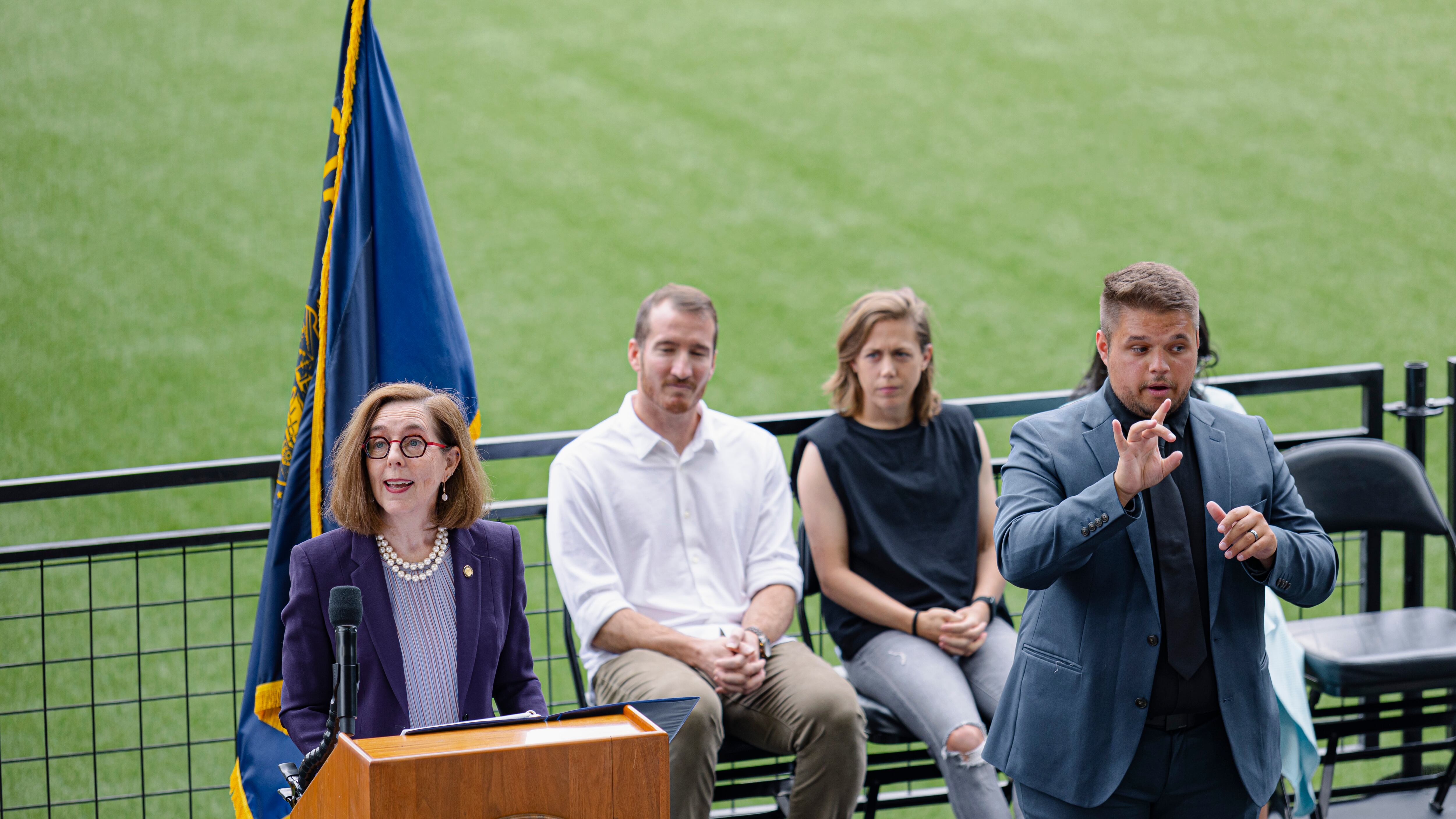Why do Gov. Kate Brown’s COVID speeches use sign language interpreters rather than closed captioning? Does the government hire these folks just to burn through our tax dollars? Also, what’s with the oddball facial contortions? —Dirty Al
That’s just the way she talks, Al. Cut the governor some slack. Oh, wait—you mean the interpreter’s facial expressions. We’ll get to that in a minute. First, I’m going to try to get you to care about the needs of a group that doesn’t include you (though your use of the phrase “our tax dollars” suggests that may be an uphill battle).
One problem with using closed captioning for emergency communications is that closed captions are not exactly foolproof. I think we’ve all seen some epic fails in this regard, particularly with live events. When the goal is to impart lifesaving information to as many people as possible, you’d prefer to avoid instructions like (I didn’t make this up): “MY CATS GOT WEEDED DOWN AGAIN. OTHER AND SAID THEY DON’T GET WHAT IT DOWN.”
Another challenge is that for many Deaf people in the United States, American Sign Language, not English, is the mother tongue. For these folks, learning written English is like learning a foreign language—only harder, because you can’t rely on English’s (sort of) phonetic spelling to match the written word to its spoken counterpart.
Given that educating children with disabilities has not exactly been a top priority for many public school systems (thanks, coincidentally, to the efforts of people who also like to talk about “our tax dollars”), it’s impressive that native ASL speakers (or rather, signers) manage to learn written English at all. But when they do, it’s sort of as if you (against all odds) had learned French: You could watch the news in it, but it will always be more comfortable in your native tongue.
As to those “oddball facial contortions,” as you describe them (thank God the sensitivity training is paying off), they are indeed part of the language: Since ASL can’t rely on tone or vocal inflection to convey meaning the way spoken languages do, an analogous function is served by facial expressions, some of which may appear exaggerated to you and me. (Although if you see an English-speaking person yelling with no sound, they can look pretty funny, too. Cut one off in traffic if you don’t believe me.)
Questions? Send them to dr.know@wweek.com.

